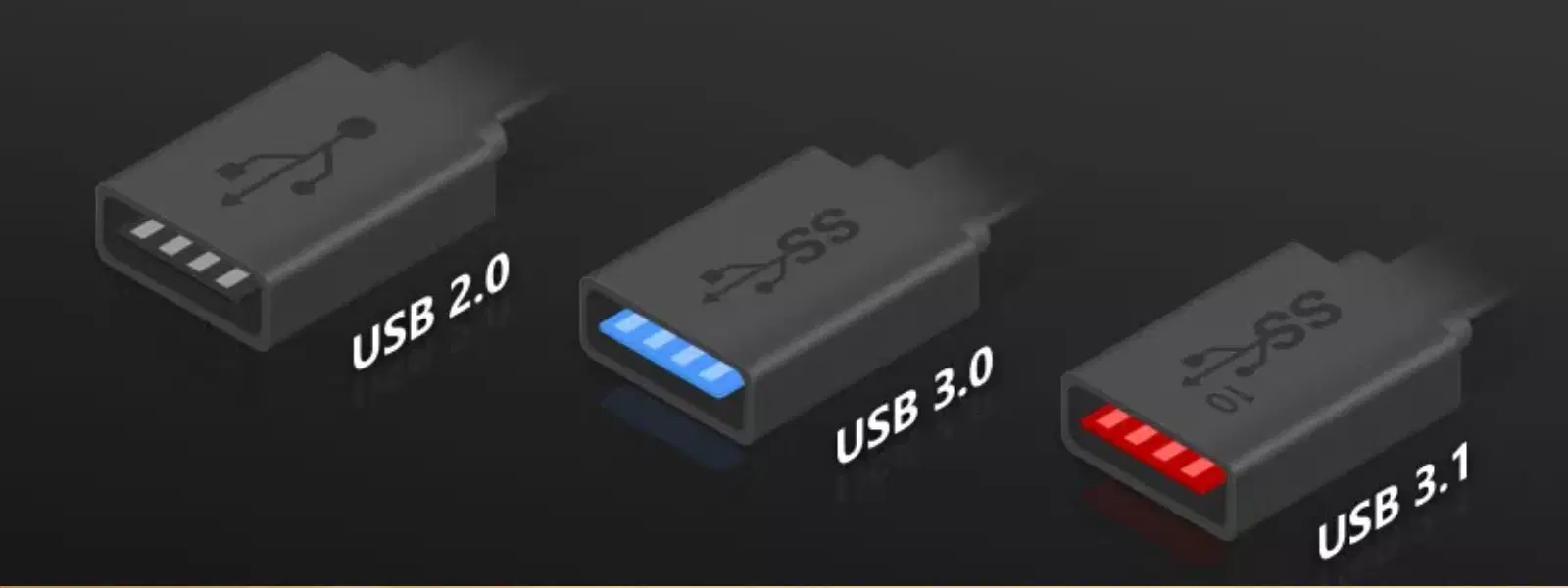
Consumer Electronics
•03 min read
USB ports are an everyday presence in our digital lives, making it essential to understand what is USB 2.0 and 3.0. Whether you are transferring files or charging your devices, knowing the difference between USB 2.0 and 3.0 can help you choose the ideal port. In this guide, we provide a checklist that explains the basics, practical benefits, and key differences, ensuring that you make an informed decision.
What is USB 2.0?
USB 2.0 has been a reliable standard, widely adopted in numerous devices over the years. It offers a respectable data transfer rate suitable for everyday tasks and basic power delivery. Though its speed is moderate when compared with modern standards, USB 2.0 remains a solid choice for simpler tasks.
What is USB 3.0?
USB 3.0 is the upgraded standard that offers significant improvements in speed and efficiency. With faster data transfer capabilities, it meets the demands of today’s data-intensive tasks while ensuring that power delivery is enhanced for rapid charging. Additionally, USB 3.0 is designed to be compatible with USB 2.0 devices, although the performance will be consistent with the older standard when connected to a USB 2.0 port.
Performance and Speed
The USB 3.0 data transfer speed outpaces the USB 2.0 transfer rate by a considerable margin, making it ideal for large file transfers and responsive connectivity. If you frequently back up videos or high-resolution images, the improved efficiency of USB 3.0 can considerably reduce waiting times.
Power Delivery
While USB 2.0 delivers enough power for routine charging tasks, USB 3.0 port functionality includes faster, more efficient power management. This means that charging is faster, which can be an important factor if you rely on swift turnaround times for your devices.
Physical Characteristics
Identifying USB ports is simplified with visual cues such as blue-coloured connectors or a marking of 'SS' for SuperSpeed. These hints help quickly differentiate between USB 2.0 and USB 3.0 options. However, regardless of appearance, it is essential to verify port capabilities by checking device specifications.
Backward Compatibility
One of the convenient aspects of USB 3.0 is its backward compatibility with USB 2.0 devices. Keep in mind that when a USB 3.0 device is connected to a USB 2.0 port, the performance will align with the older standard. This ensures that older devices continue to function seamlessly, although without the speed advantages of USB 3.0.
Choosing the right USB port involves considering your specific needs. Here is a short checklist to guide your decision-making:
Identify Your Use Case
If your primary tasks involve frequent data transfer, then the superior speed of USB 3.0 is invaluable. For those who mainly perform basic functions or occasional charging, USB 2.0 might suffice.
Check Device Compatibility
Before making a switch, review your device’s specifications to confirm whether it supports USB 3.0. Upgrading to USB 3.0 can be a smart way to future-proof your tech setup, ensuring you are prepared for more data-intensive tasks as technology evolves.
Evaluate Your Budget and Hardware
Consider what investment is needed to upgrade to USB 3.0-compatible devices. If you already own gadgets that meet your everyday requirements, sticking with USB 2.0 everywhere may be a cost-effective solution. However, for high performance and efficiency, USB 3.0 offers evident advantages.
Speed and Efficiency
The enhanced USB 3.0 data transfer speed ensures that everyday tasks such as file backups and video transfers are completed quicker. This efficiency also means less waiting, allowing you to focus on more important tasks at hand.
Enhanced Functionality
Besides improved speed, USB 3.0 port functionality supports dual-direction data flow and better power management. This dual capability lends itself well in modern work or play environments, where quick and reliable transfer is essential.
Future-Proof Technology
As technology advances, devices are becoming more demanding. USB 3.0’s robust performance can easily keep up with the latest gadgets, ensuring that your connectivity stays relevant for years to come.
The various USB connection types have their own roles and are often linked with the standards in question. Common types include USB-A, USB-B, and USB-C.
How to Match USB Types with Your Needs
USB-A ports are traditionally seen with both USB 2.0 and USB 3.0. Meanwhile, newer USB-C connectors are more common in modern devices and offer even greater versatility. Knowing which port is best suited for your application, whether it be data transfer or enhanced power delivery, can lead to a smoother tech experience.
Did You Know? The Hidden Benefit of USB 3.0
USB 3.0 not only offers faster data transfer speeds but also reduces energy consumption during idle states, making it an eco-friendly choice for modern devices. This blend of speed and efficiency makes it an attractive option for those who care about both performance and environmental impact.
Look for physical indicators like blue-coloured ports or labels marked with 'SS' (SuperSpeed), which signify the USB 3.0 standard. Checking the device specifications can also provide clarity.
USB 3.0 is ideal for high-speed data transfer, efficient charging, and powering modern peripherals such as external hard drives, SSDs and high-resolution cameras. Its enhanced capabilities offer a smoother, more responsive experience.
While USB 2.0 supports standard charging, it lacks the advanced power delivery mechanisms of USB 3.0. The latter is designed for faster and more efficient energy transfer, which is particularly beneficial for modern devices.
To summarise, USB 2.0 remains a dependable option for basic needs while USB 3.0 provides superior performance, efficiency and power management. Using this checklist can help clarify which standard best fits your requirements, ensuring that your device connectivity aligns with your modern lifestyle. With enhanced NeuCoins rewards and the special benefits available on Tata Neu, savvy shoppers can make informed tech decisions that enhance everyday convenience without compromising on quality.